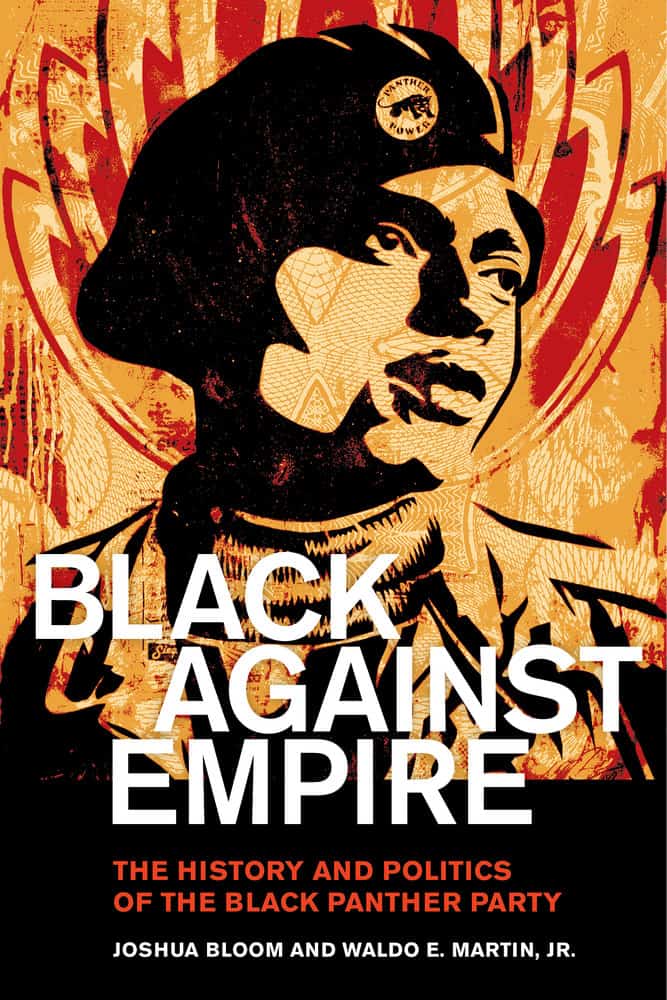By Joshua Bloom, co-author of Black Against Empire: The History and Politics of the Black Panther Party
Denial of systemic racism continues following Derrick Chauvin’s murder of George Floyd. A friend told me that recent attacks by police on White protesters proved police aren’t racist. Nothing could be further from the truth. Repression of anti-racist protesters reinforces racism – even if the protesters are White.
Chauvin perpetuated structural racism, racially differentiated patterns of behavior which systematically reduce the life chances of people of color. This type of racism cannot be reduced to the attitude of “bad cops,” as Biden has suggested. The behavior of the other officers at the scene during the murder reveals structural racism. For more than eight minutes Chauvin willfully disregarded repeated protestations from passersby, callously pressing the life out of George Floyd in open daylight. Accustomed to devaluing Black life, the officers on hand – even the Black officer – acted as if it didn’t matter.
This was not a tragic exception to the rule. It was the manifestation of customary policing of Black people under the New Jim Crow.
The use of coercive force by officers of the state establishes practical precedents. When Officer Chauvin of Minneapolis killed George Floyd, he was materially reinforcing that police can put a Black person to death in response to the accusation of a $20 crime. It is not just that Black people are at higher risk of being killed by police, or that a greater proportion are killed unarmed. Police kill with impunity.
Additionally, repression of anti-racist activism is racist. Black people have sought to redress structural racism through institutionalized channels since the founding of the United States. But given that racial domination is built into the structure of power, these efforts always fall short. As Martin Luther King, Jr. wrote in his letter from Birmingham jail, “freedom is never voluntarily given by the oppressor; it must be demanded by the oppressed.”
I’ve studied the dynamics of anti-racist mobilization and repression for 20 years, and challenges to structural racism are always met with violent repression, as they were in the Civil Rights Movement. Anti-racist activism following the murder of George Floyd has been widely met with orchestrated police violence. Such repressive actions are not aberrations. They are regulatory – protecting the status quo, including structural racism. While some videos have shown individual police responding angrily to protesters, police aren’t more racist than the rest of us. Rather, as protests by police demonstrate, police understand viscerally that defending status quo arrangements of power is difficult and dangerous and requires constant re-imposition of authority. DAs and judges understand this too, which is why police are rarely prosecuted. In short, police repress anti-racist protests in defense of the status quo arrangements threatened, namely structural racism.
Finally, repression of anti-racist protesters is racist even if the activists repressed are White. The repression of non-Black allies is a permanent front in the defense of structural racism. For example, consider James Chaney, Andrew Goodman, and Michael Schwerner who volunteered to organize Black voter registration in Neshoba County, Mississippi during Freedom Summer 1964. Chaney was Black, but Goodman and Schwerner were White Jews. Vigilantes working with the Sheriff to deny Black people citizenship rights abducted the three, killed them, and buried them in an earthen dam.
Since the killing of George Floyd, local authorities around the country have falsely blamed White “outside agitators” for the eruption of insurgency to justify repression – as if Black people couldn’t imagine rebelling on their own, and as if White people have no inherent interest in protecting Black life. While Whites benefit in the short-term from structural racism, it works against their long-term interests, depressing wages and political power. Race originated in the transatlantic slave trade as political and economic authorities invented Whiteness, differentiating White indentured servants from Black slaves, to quell rebellion by keeping people divided.
While George Floyd was killed because he was Black, he was also a person. His murder makes us all more subject to state violence. As Angela Davis explained at a Black Lives Matter event in 2017, “The quest for Black freedom is the quest for democracy in the United States of America. Black people have always been at the center of that struggle.”
The future of democracy lies in the streets with those who put their bodies on the line to fight structural racism. Will they be repressed? The gauntlet has been cast. Trump draws support from police by promising to bolster their repressive authority. If authorities succeed in vilifying anti-racist protesters as impatient, violent, or risks to public health – then racist policing will continue. And Trump will win reelection.

